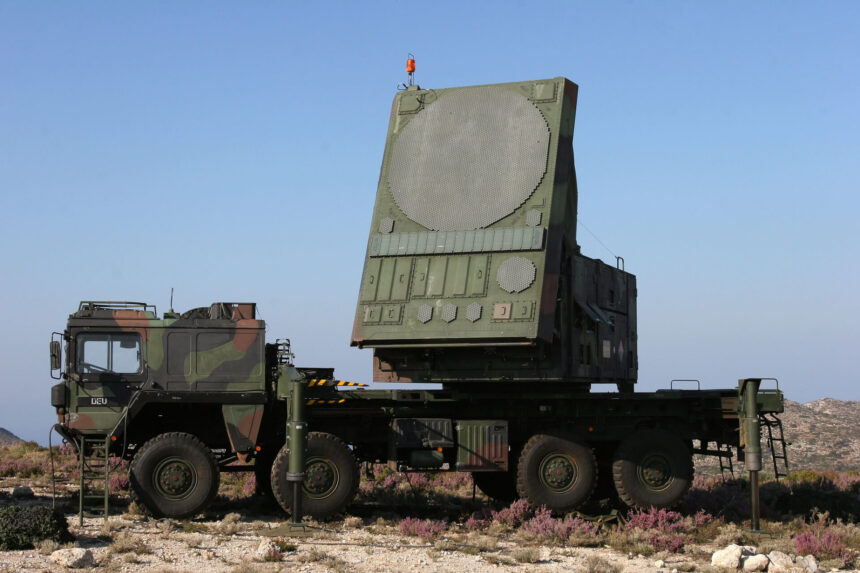A story that caused quite a stir a few days ago shows that behind the scenes, far from the public eye, much more is being done to support Ukraine than many people realise.
According to Major General Maik Keller, the deputy commander of NSATU (NATO Security Assistance and Training for Ukraine), specialists from the German Luftwaffe repaired a badly damaged Ukrainian Patriot radar that had already been written off by the industry.
Many details are unknown, but since at least some details have recently been published retrospectively and there is enormous interest in the story – my tweet on the subject alone has received more than 1,100 retweets and 7,800 likes – I have decided to write a more detailed article about it.
First of all, I would like to note that I also contacted the German Luftwaffe, who informed me that they appreciated my commitment to accurate and well-founded reporting, but that for reasons of military security, they did not wish to comment any further.
Let’s go back a few months in time and have a closer look at what happened.
While Major General Maik Keller announced in an interview with the FAZ published on the 6th of August that a Ukrainian radar unit belonging to the MIM-104 Patriot air defence system had suffered a serious hit a few months ago, he provided further details in an appearance on Nachgefragt, which was broadcast two days later.
According to Keller, Russians forces successfully hit a Ukrainian Patriot radar, which is part of a fire unit supplied by Germany, at the end of 2024.
This is particularly “interesting” because, on the one hand, it proves that this case dates back more than just “a few months” and, on the other hand, that it is likely that difficult-to-replace personnel were seriously injured, possibly even killed.
Unfortunately, even after extensive research, I was unable to link this direct hit to a publicly known Russian attack such as the one near Dnipro in October 2024.
However, for some time now, there have been repeated rumours behind closed doors that Patriot fire units have been deliberately targeted in Kyiv, among other places. Of course, it is often impossible to prove beyond doubt whether there is any truth to these rumours.
After the direct hit, the severely damaged radar was brought to Germany so that the damage could be assessed by industry experts.
For the Ukrainian Armed Forces, this meant that one of the three Patriot fire units previously supplied by Germany was initially out of service and could not be deployed for the time being.
To my knowledge, various radar systems can relay target data to the fire unit, but such adjustments are not only time-consuming, they also require the appropriate resources and technical expertise.
And even if, for example, a TRML-4D, of which the German government has so far delivered 16 units to Ukraine as stand-alone radar systems, were to supply target data to the Patriot fire unit in the future, one would still be limited by the radar’s capabilities.
To my knowledge, this would mean that after a certain period of time, the fire unit could be put back into operation, but it would be virtually impossible to intercept most ballistic missiles in the future. For this task, the MIM-104 Patriot air defence system in its most modern configurations is normally the best choice.

Whether this step was actually taken or whether the Patriot fire unit was temporarily stored in Ukraine for many months is a matter of speculation. What we do not need to speculate about is what happened after the radar unit was transported to Germany.
Experts from the US manufacturer RTX Corporation assessed the situation and concluded that the radar unit could not be repaired because the damage was too extensive.
It was the news that no one wanted to hear. After all, it would take years to get a newly ordered and freshly produced radar unit as a replacement without priority status from the manufacturer.
For this reason, the NSATU (NATO Security Assistance and Training for Ukraine) was not satisfied with the industry’s findings. After consulting all parties involved, the German Luftwaffe decided to try it out for themselves.
Specialists from the German Luftwaffe, who are intensively involved in the field of radar repairs, took on the task.
According to Major General Keller, they invested a tremendous amount of time in the project, working 16 hours a day from Monday to Saturday, most likely for many weeks and months straight.
According to Keller, they even had to make their own tools in order to carry out the diagnostics and repairs. Even without knowing all the details, it is clear that the experts have achieved a technical masterpiece.

Finally, they achieved what the manufacturer had thought was impossible. In July, more than seven months after the radar unit had been severely damaged by a direct hit, it was returned to Ukraine.
Just a few days later, feedback came in from Ukraine: everything was fine. They had already been able to intercept a first Russian missile, given the German wording “Rakete” likely a ballistic missile, which had been detected by this radar.
This must have been a great relief, and perhaps even caused a temporary “party atmosphere”, not only for the German Luftwaffe.
This story offers a rare glimpse into what often goes on behind the scenes. It provides insight into the considerable brilliance, experience, and expertise that some experts in the Luftwaffe bring to the table and serves as a reminder of how important international cooperation is when it comes to supporting Ukraine.
If you liked this post, consider following me on X, Bluesky, or Telegram. If you like, you can also leave me a tip on Ko-fi.



thanks for all your reporting, amazing work from the German Luftwaffe!V
You’re welcome!